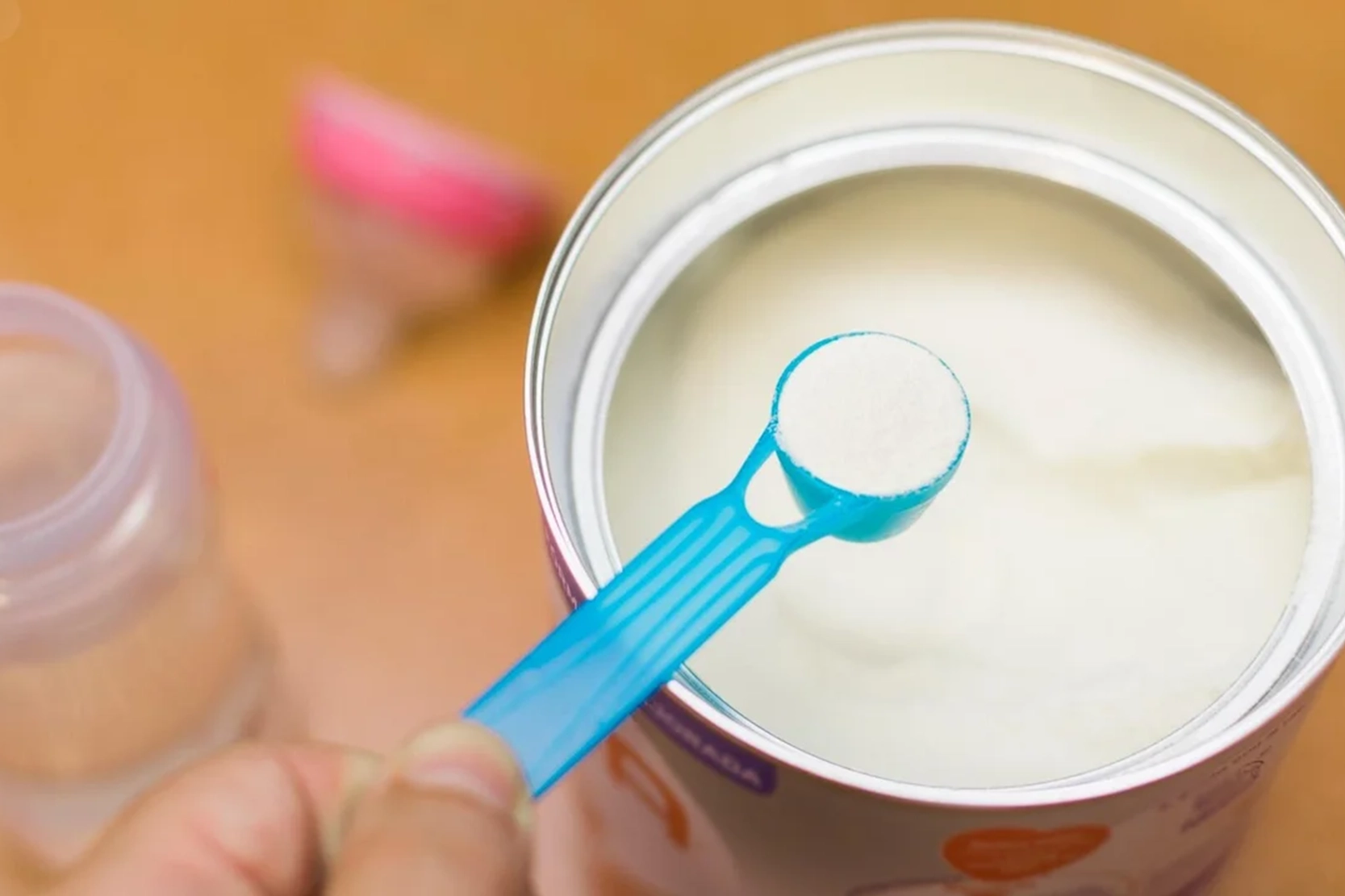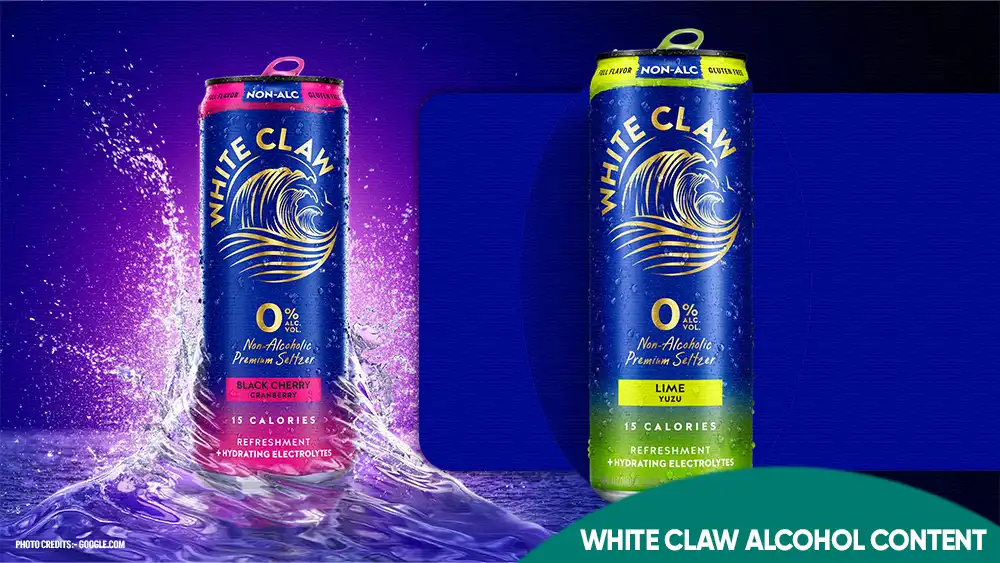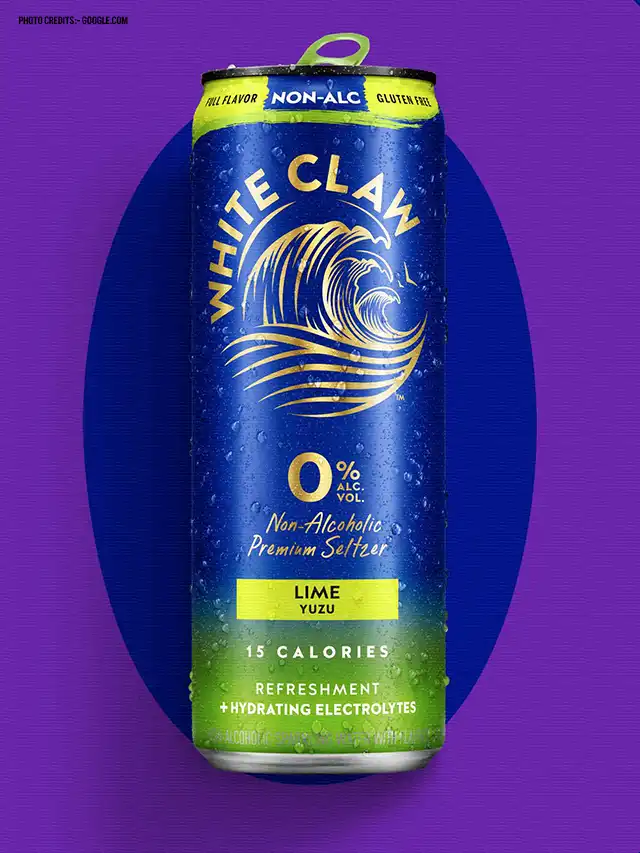
HEALTH BLOG
White Claw Alcohol Content: The Truth Behind the Popular Hard Seltzer
-
Rahul Priydarss
Discover the essentials of White Claw alcohol content in our detailed blog post. Learn what makes this popular hard seltzer unique, from its 5% ABV standard version to the 8% ABV White Claw Surge. Explore its refreshing flavors, low-calorie and carb count, and how it compares to other alcoholic beverages. Understand its impact on your health, diet compatibility, and the process behind its creation. Whether you’re a seasoned fan or new to White Claw, this article offers everything you need to know about enjoying this trendy, lighter alternative in the world of alcoholic drinks.
Introduction of White Claw Alcohol Content:
White Claw has quickly become a household name in the world of alcoholic beverages. Known for its refreshing taste and convenient packaging, this hard seltzer has taken the market by storm. However, many consumers are curious about the specifics of its alcohol content. This comprehensive blog post will delve into the details of White Claw’s alcohol content, how it compares to other beverages, its effects, and much more.
What is White Claw?:
Before we dive into the specifics of alcohol content, let’s first understand what White Claw is. White Claw is a hard seltzer brand, a type of alcoholic beverage that combines sparkling water, a gluten-free alcohol base, and fruit flavor. It was introduced in 2016 by Mark Anthony Brands, the same company that produces Mike’s Hard Lemonade.
White Claw is popular for several reasons. Its low-calorie count, refreshing flavors, and convenience make it an attractive option for those who want to enjoy a drink without beer’s heaviness or cocktails’ sweetness. The drink is available in a variety of flavors, including Black Cherry, Mango, Natural Lime, Raspberry, and Ruby Grapefruit, among others.

Table of Contents
What is Alcohol:
Alcohol, in its simplest form, refers to a group of organic compounds characterized by the presence of a hydroxyl group (-OH) attached to a carbon atom. The most commonly known and consumed type of alcohol is ethanol (ethyl alcohol), which is also the type found in alcoholic beverages. Ethanol is produced through the fermentation of sugars by yeast, resulting in the conversion of sugars into ethanol and carbon dioxide.
Alcohol as ethanol is widely used in beverages such as beer, wine, and spirits, where it serves as the primary psychoactive ingredient. It affects the central nervous system, leading to effects that range from relaxation and lowered inhibitions to impaired coordination and, in excessive amounts, potentially severe intoxication.
Beyond beverages, alcohols are a diverse group of chemical compounds used in various industrial and household applications. They can act as solvents, disinfectants, and fuel sources due to their ability to dissolve a wide range of substances and their flammability.
History of White Claw:
White Claw Hard Seltzer, a brand that has taken the beverage industry by storm, was introduced to the market in 2016 by Mark Anthony Brands, the same company behind Mike’s Hard Lemonade. This beverage was developed in response to the growing demand for low-calorie, low-sugar alcoholic drinks among health-conscious consumers.
Early Development and Launch (2013-2016): The inception of White Claw can be traced back to the early 2010s when the hard seltzer category was still in its infancy. Recognizing a gap in the market for a refreshing, light alcoholic beverage, Mark Anthony Brands began experimenting with various formulations. Their goal was to create a drink that combined the appeal of a carbonated soft drink with a moderate alcohol content, catering to those who wanted a lighter alternative to beer and wine.
After several years of research and development, White Claw was officially launched in 2016. The initial lineup featured three flavors: Natural Lime, Black Cherry, and Ruby Grapefruit. These flavors were chosen to appeal to a broad audience and to set the stage for future expansions.
Market Reception and Growth (2016-2018): White Claw’s entry into the market coincided with a shift in consumer preferences towards healthier, more transparent alcoholic beverages. The brand’s marketing emphasized its low calorie, low carb, and gluten-free properties, which resonated strongly with millennials and health-conscious drinkers. White Claw quickly gained a loyal following, and its popularity grew through word-of-mouth and social media.
During this period, the hard seltzer category as a whole began to gain momentum. Competitors such as Truly Hard Seltzer and Bon & Viv entered the market, contributing to the rising popularity of the segment. However, White Claw managed to distinguish itself through its crisp taste, strong branding, and consistent quality.
The Hard Seltzer Craze (2019-Present): The year 2019 marked a turning point for White Claw and the hard seltzer industry. As the “summer of seltzer” unfolded, White Claw experienced an unprecedented surge in demand. The brand’s catchy slogan, “Ain’t no laws when you’re drinking Claws,” went viral, further fueling its popularity. Retailers struggled to keep White Claw on the shelves, leading to what was dubbed a “White Claw shortage.”
In response to the skyrocketing demand, Mark Anthony Brands ramped up production and expanded the flavor lineup to include new varieties such as Mango, Watermelon, and Tangerine. By the end of 2019, White Claw held a dominant market share in the hard seltzer category, accounting for nearly 60% of all sales.
White Claw Alcohol Content:
The standard alcohol content in White Claw hard seltzer is 5% alcohol by volume (ABV). This percentage is similar to that of many popular beers. The 5% ABV means that in a 12-ounce can of White Claw, there is approximately 0.6 ounces of pure alcohol.
White Claw has also introduced a higher alcohol content version called White Claw Surge. White Claw Surge has an 8% ABV, catering to those who prefer a stronger drink. This means that in a 12-ounce can of White Claw Surge, there is roughly 0.96 ounces of pure alcohol.
Comparing White Claw to Other Alcoholic Beverages:
To put White Claw’s alcohol content into perspective, it’s useful to compare it to other common alcoholic beverages.
Beer: Most standard beers have an ABV ranging from 4% to 6%, with light beers typically around 4.2% ABV. This makes White Claw comparable to most beers in terms of alcohol content.
Wine: Wine usually has a higher ABV, typically between 12% and 14%. Therefore, a glass of wine contains more alcohol than a can of White Claw.
Spirits: Spirits such as vodka, whiskey, and rum have much higher ABV, usually around 40%. However, these are consumed in much smaller quantities compared to beer, wine, or hard seltzer.
Cocktails: The alcohol content in cocktails varies widely depending on the recipe and the amount of spirit used. A cocktail could easily surpass the alcohol content found in a can of White Claw.

How Alcohol Content Affects You:
The way alcohol content affects an individual can vary based on several factors, including body weight, gender, tolerance, and the rate of consumption. Here are some key points to consider.
Body Weight and Gender: Generally, individuals with lower body weight and women tend to feel the effects of alcohol more quickly than larger individuals and men, respectively.
Tolerance: Regular drinkers may develop a tolerance, meaning they require more alcohol to feel the same effects as someone with a lower tolerance.
Rate of Consumption: Drinking White Claw slowly over time will have a different impact than consuming several cans in quick succession.
Calories and Carbohydrates in White Claw:
In addition to alcohol content, many consumers are interested in the calorie and carbohydrate content of White Claw. A standard 12-ounce can of White Claw contains 100 calories and 2 grams of carbohydrates. This is significantly lower than many beers and cocktails, making White Claw an appealing option for those mindful of their caloric intake.
The Process of Making White Claw:
Understanding the process behind White Claw can shed light on its unique characteristics. White Claw is made through a fermentation process that uses a blend of seltzer water, a gluten-free alcohol base, and fruit flavors. Here’s a simplified version of the process.
- Fermentation: The alcohol base is created by fermenting sugar cane or malted barley.
- Filtration: The alcohol is then filtered to remove impurities, resulting in a clean and neutral alcohol base.
- Mixing: The alcohol base is mixed with sparkling water and natural fruit flavors.
- Carbonation: The mixture is carbonated to give it its signature fizz.
- Packaging: The finished product is canned and distributed.
Ingredients Table for White Claw Hard Seltzer:
White Claw Hard Seltzer is known for its simple and clean ingredient list. While the exact quantities of each ingredient are proprietary and not publicly disclosed, the general components of White Claw are as follows.
| Ingredient | Quantity (Approximation) |
|---|---|
| Purified Carbonated Water | Main Ingredient |
| Alcohol | 5% Alcohol by Volume (ABV) |
| Natural Flavors | Not Specified (Flavor Dependent) |
| Cane Sugar | Minimal Amount (Low-Calorie Content) |
| Citric Acid | Small Amount (For Acidity) |
| Sodium Citrate | Small Amount (Stabilizer) |
Notes:
- Purified Carbonated Water: Forms the base of the beverage, providing the fizzy texture.
- Alcohol: Derived from fermented sugar, contributing to the 5% ABV.
- Natural Flavors: Varies depending on the specific flavor variant (e.g., Black Cherry, Lime, Mango).
- Cane Sugar: Used sparingly to keep the calorie count low.
- Citric Acid: Adds a slight tartness to balance the sweetness.
- Sodium Citrate: Acts as a stabilizer to maintain the drink’s consistency.
For more detailed nutritional information, it’s always best to refer to the packaging of the specific White Claw flavor you’re interested in.
Popularity and Market Impact:
Since its introduction, White Claw has become a cultural phenomenon. It appeals to a wide range of consumers, from casual drinkers to fitness enthusiasts looking for a lower-calorie option. The brand’s marketing strategy, which emphasizes fun, active lifestyles, has resonated with many, contributing to its rapid growth. The popularity of White Claw has also influenced the broader market. Many other brands have launched their own hard seltzers, leading to a significant expansion of the hard seltzer category. This competition has driven innovation and variety, benefiting consumers with more choices.
Health Considerations:
While White Claw is often marketed as a healthier alternative to beer and cocktails, it’s essential to remember that it still contains alcohol. Here are some health considerations to keep in mind:
- Moderation: As with any alcoholic beverage, moderation is key. Excessive consumption can lead to a range of health issues, including liver disease, cardiovascular problems, and addiction.
- Hydration: Alcohol is a diuretic, meaning it can lead to dehydration. It’s crucial to drink water alongside alcoholic beverages to stay hydrated.
- Calories: While lower in calories compared to many other options, the calories in White Claw can still add up, especially if consuming multiple cans.
White Claw and Diets:
White Claw is often chosen by those following specific diets, such as keto or low-carb diets, due to its low carbohydrate content. Here’s how White Claw fits into some popular diets:
- Keto Diet: With only 2 grams of carbohydrates per can, White Claw is considered keto-friendly, making it a popular choice for those on a ketogenic diet.
- Low-Calorie Diets: At 100 calories per can, White Claw is a lower-calorie option compared to many alcoholic beverages, fitting well into calorie-conscious diets.
- Gluten-Free Diets: White Claw’s alcohol base is gluten-free, making it suitable for those with gluten intolerance or celiac disease.
White Claw Flavors:
One of the appealing aspects of White Claw is the variety of flavors available. Some of the most popular flavors include:
- Black Cherry: Known for its bold and slightly sweet taste.
- Mango: A tropical flavor that’s both sweet and refreshing.
- Natural Lime: Crisp and zesty, perfect for a hot day.
- Raspberry: A balance of sweet and tart flavors.
- Ruby Grapefruit: A refreshing citrus option with a slight tang.
– Each flavor offers a unique experience, catering to different taste preferences.
The Future of White Claw:
White Claw’s success shows no signs of slowing down. The brand continues to innovate, introducing new flavors and products to meet consumer demand. Additionally, the hard seltzer market as a whole is expected to grow, with White Claw maintaining its position as a leading player. As consumer preferences evolve, White Claw is likely to adapt, offering new options that align with emerging trends. Whether it’s through new flavors, packaging, or marketing strategies, White Claw is poised to remain a favorite in the alcoholic beverage market.
FAQs about White Claw Alcohol Content:
A1: White Claw has an alcohol content of 5% ABV.
A2: A 12-ounce can of White Claw contains 100 calories.
A3: Yes, White Claw is made with a gluten-free alcohol base.
A4: White Claw offers flavors like Black Cherry, Mango, Natural Lime, Raspberry, and Ruby Grapefruit.
A5: White Claw has 5% ABV, while wine typically ranges from 12% to 14% ABV.

-Please remember, to always consult with healthcare professionals or Doctors for personalised advice related to medical conditions.
Conclusion:
White Claw’s alcohol content, set at 5% ABV for the standard version and 8% ABV for White Claw Surge, makes it comparable to many beers but lower than wine and spirits. Its popularity is driven by its low calorie and carbohydrate content, refreshing flavors, and the convenience of canned packaging. As a result, White Claw has become a go-to option for those looking for a lighter, more refreshing alcoholic beverage. Understanding the alcohol content in White Claw and how it fits into various diets and lifestyles can help consumers make informed choices. Whether you’re a seasoned White Claw fan or new to the hard seltzer scene, this drink offers a unique and enjoyable way to unwind and socialize. With its ever-growing popularity and continued innovation, White Claw is set to remain a staple in the world of alcoholic beverages.




